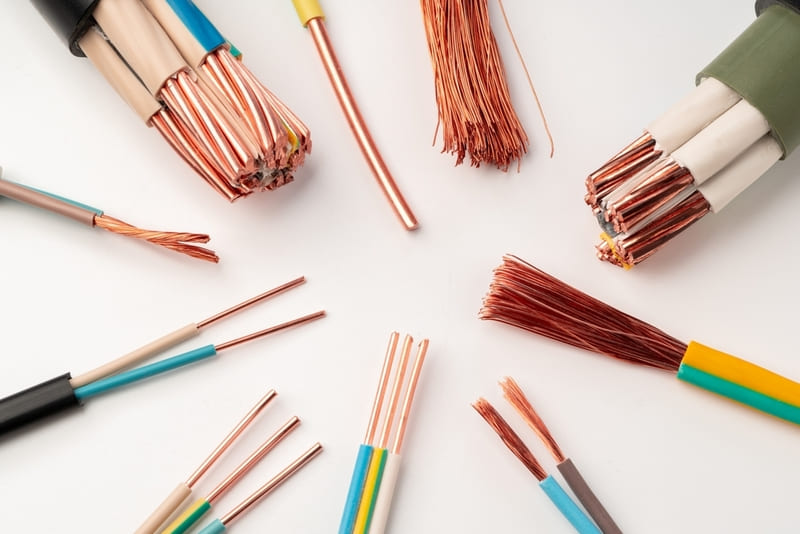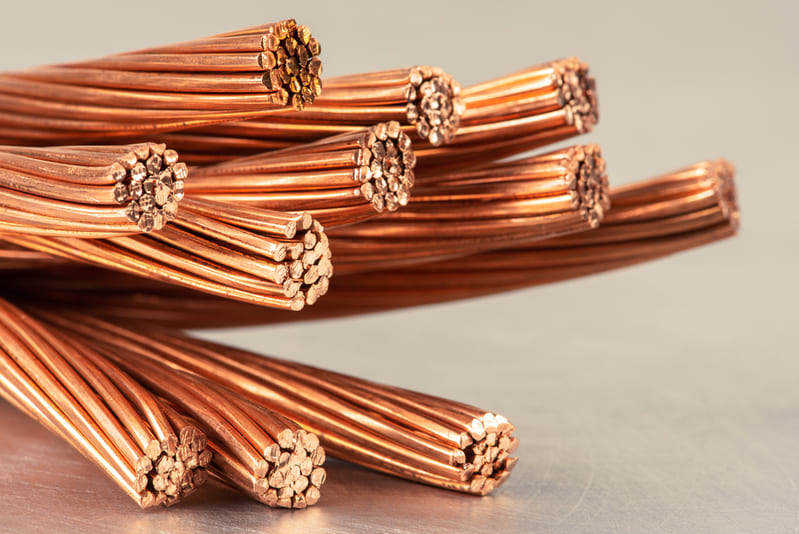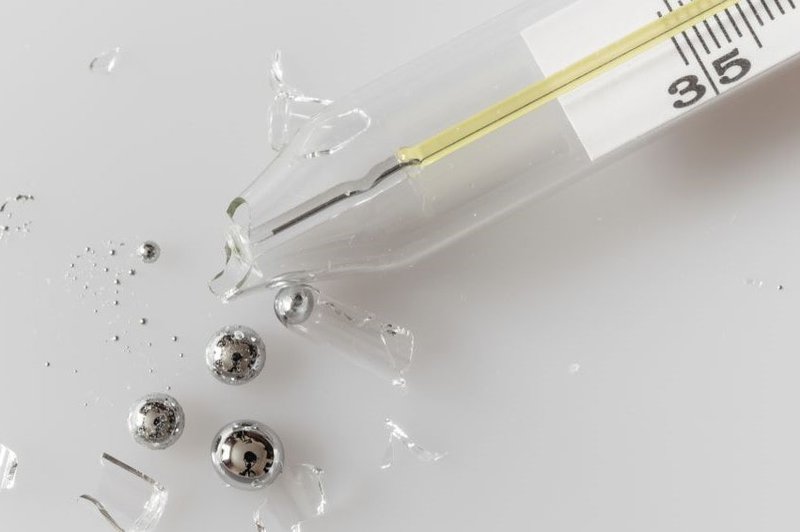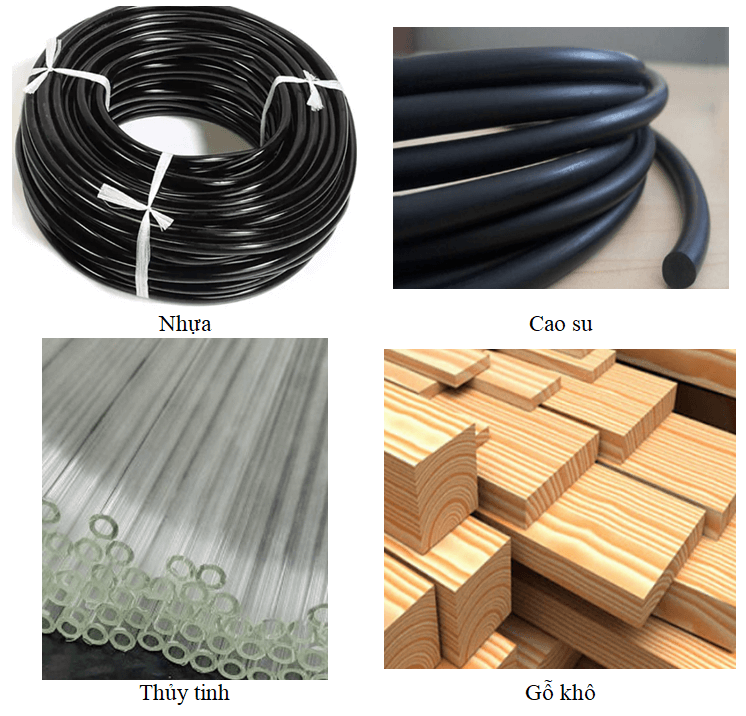Nội dung bài viết
Electrical conductors play an important role in transmitting electricity to serve people’s daily activities and production. So what is an electrical conductor? To learn about the properties, characteristics, applications of conductive materials and how to distinguish them from insulators, you can follow KTH ELECTRIC‘s article.
What is an electrical conductor?
Electrical Conductor is a type of material that allows electric current to flow in one or more directions with little resistance. According to the theory of electronic physics, these conductors contain free electrons or charged ions, which move easily from one atom to another when voltage is applied. The ability of a material to allow electric current to pass through (or the ability to transfer heat or electricity) is called conductivity. This parameter depends on factors such as:
- Atomic structure
- Ambient temperature
- Impurities present in the material
- External factors…
Metal has the best electrical conductivity, so it is often used to produce electrical wires, components for circuit breakers, fuses, plugs, sockets, light bulb filaments…

Humans, the earth, and animals can all be conductors when exposed to electric current. This is the cause of electric shock. Special materials such as water in pure form are inherently insulators, but with just a little salt added, they become excellent conductors.
Properties and characteristics of conductive materials
Besides the ability to transmit electric current, conductive materials also possess many special physical properties.
Electrical conductivity in all states
This is a typical property of electrical conductors. Conductive materials can exist in many states such as solid, liquid, vapor, or gas depending on temperature and pressure conditions.

Low resistance
This is a quantity that represents the degree of resistance to electric current by a conductor. This value depends on:
- Resistivity
- Conductor length
- Horizontal section
- Ambient temperature
The lower the resistance of an object, the higher its ability to conduct electricity. Therefore, electrical conductors such as copper and aluminum often have low resistivity, helping electricity flow easily. However, the resistor still has the ability to generate a certain amount of heat when current flows through it – also known as Joule heating or ohmic heating.
Magnetic field
When the current changes in the wire, a surrounding magnetic field will be created, causing the phenomenon of electromagnetic induction to appear. Inductance depends on:
- Conductor shape and size
- Electrical arrangement and instructions
This phenomenon causes an electromotive force in the opposite direction of the original current, called self-induction or mutual induction when it occurs between two conductors that are close together. Inductance affects conduction performance, especially in alternating current (AC) systems.
However, not all conductive materials are magnetic. This property is often manifested in certain substances such as iron, iron alloys, nickel, cobalt and only shows magnetism when placed in an environment with a magnetic field.
The charge density inside is 0
In an ideal conductor, free charges do not exist inside but are distributed on the surface of the conductor. The reason is because electrostatic forces will “chase” the charges out of the core, causing:
- The conductor has no electric charge
- The surface becomes the only place where free charge exists, helping to optimize transmission.
Thermal conductivity
At high temperatures, conductive materials will melt quickly. Any material that cools easily when cooled or heats quickly when heated will have higher electrical conductivity. On the contrary, the longer the material needs to be heated, the poorer its electrical and thermal conductivity.
Expansion
When heated at high temperatures, conductive materials will expand and contract if cooled. Therefore, when using conductive materials in construction projects, it is necessary to keep a moderate gap to release heat when necessary.
Anti-corrosion
Electrical conductors have very good corrosion resistance, even in high temperature environments. This property is proportional to the ability of an object to conduct electricity.
Mechanical properties
Materials with good electrical conductivity often come with some typical mechanical properties such as: compressive force, torsional resistance, tensile force, etc.
The above physical properties regulate the characteristics of conductive materials, suitable for electricity and heat transfer applications in daily life and production.
- Easy to bend: Good conductive materials can be bent and shaped without breaking or breaking, so they are commonly used to process and produce household and industrial equipment.
- High resistance: Conductors are resistant to abrasion and oxidation, so they maintain the ability to conduct electricity for a long time.
- Has an insulating layer: Because they conduct electricity well, in daily life and production applications, these materials must be covered with an outer layer of insulation to ensure safety and prevent electric current from coming into direct contact with humans.
How to classify electrical conductors
The most common classification criteria for electrical conductors is by material state.
Solid conductive material
Conductive materials that exist in solid form include metals and alloys. The application of these materials will depend on the resistance parameters.
- Materials with low resistivity and high conductivity will be used to make wires and cables.
- Materials with high resistance (such as Manganin, Constantan, Nickel-Chromium, Carbon alloys), corresponding to decreasing electrical conductivity, will be used to make heating tools such as light bulbs, resistors, electrical measuring tools, contact wires…
Metals are the best conductors of electricity compared to non-metals and other compounds. Inside this material are many charged electrons that move freely and can move through other compounds and objects. Therefore, metals have wide applications in making electric wires, cables, electronic devices and many other applications that require effective power transmission.
Each type of metal has different conductive properties. The 10 best conductive metals today include: silver, copper, gold, aluminum, sodium, tungsten, brass, iron, chromium, lead. Meanwhile, Bismuth, francium and mercury are the three metals with the poorest electrical conductivity.

Silver is the best conductive metal

In terms of economic value, copper is more commonly used
Learn more about Metal conducts electricity best
Liquid conductive material
Conductive materials that exist in liquid form include electrolyte solutions and molten metals. Electric current is a high-temperature environment, so when the temperature increases, the metal will melt.
For mercury, the melting temperature needs to reach 39 degrees Celsius. Therefore, of all liquid conductive metals, only mercury is used in engineering.

Gaseous conductive material
Materials that are conductive will exist in a gaseous state under certain conditions such as in a toroidal tube or in a specific environment. However, the application of this type is quite limited and not common in production.
Application of conductive materials
Conductive materials are present in most of people’s daily activities, production, commerce, and services. Typically:
Electric industry
- Electrical wires and cables: This is the most popular application. Electric wires, cables, telephone wires… are all made from good conductive materials such as copper and aluminum.

- Electrical equipment: Conductive materials are used to make internal parts of transformers, generators, electric motors, fuses, sockets…
Electronics and telecommunications
- Electronic components: Integrated circuits (ICs), transistors, electronic circuits, resistors, and rheostats all use conductive materials to transmit and control electric current.

- Household electronic devices: Phones, computers, refrigerators, washing machines and many other household appliances all contain wires and conductive components inside.
- Telecommunications: Fiber optic cables (with protective conductive layer) and transmitting antennas also use conductive materials.
Living – Production
- Heating equipment: Conductive materials with high resistivity such as Nickel-Chromium alloy are used in the wiring of electric stoves, heaters, and kettles to generate heat.
- Machinery manufacturing: Iron is used to produce car engines and car radiators to conduct heat and remove heat from the engine.
- Cooking utensils: Aluminum is used to make cooking utensils.
- Sensor and battery: Conductive materials are used in sensors to receive signals and are important components in manufacturing batteries and accumulators.
Medical system
- Medical devices mostly use conductive parts to operate.
- Mercury is in thermometers used to check body temperature.

Specific applications of the best conductive materials include:
- Copper (Cu): It is the best conductive metal (after silver) and is widely used in electric wires, cables, transformers, and electric motors.
- Aluminum (Al): Electrical conductivity after copper, light weight and corrosion resistance, used in overhead power cables, capacitors, electric motor rotors.
- Wolfram (W): The solid metal, which has the highest melting temperature, is used in light bulb filaments.
- Lead (Pb): Conducts electricity well at low temperatures, used as a protective layer for electric cables and battery plates.
Be careful when using conductive materials
Although electrical conductors are indispensable components in civil and industrial equipment, if not used properly, they can directly affect human life. Therefore, when using conductive materials, you should note:
- Use insulating materials to cover the outside to ensure safety during use.
- Do not let conductive objects come into direct contact with each other, there is a risk of causing an electrochemical corrosion reaction.
- Install and use electricity according to manufacturer’s recommendations and safety standards.
- Be careful when using electricity in the summer or in high temperature environments, it may cause a fire or explosion.
- Keep a safe distance between conductive objects and electrical equipment, especially power sources.
Distinguish between conductors and insulators
In contrast to conductors, insulators have the ability to resist or not allow electric current to flow. Insulators usually have very high resistivity (about 106 – 1015Ωm). The atomic bonding in this material is very strong, accompanied by saturation, so electrons are not able to move from one atom to another.
Insulating materials are mostly natural solids, the most common ones today are glass, plastic, rubber, porcelain, plastic… This type of material is often used to make insulators and insulating parts in electrical tools to ensure safety for users.

Refer to the following comparison table to distinguish between conductors and insulators:
| Criteria | Conductors | Insulator |
| Ability to transmit electricity | Electric current flows easily | Do not allow current to flow |
| Charge location | Electric charge exists on the surface of the wire | Electric charge does not exist |
| Energy storage capacity | Conductors do not store energy when kept in a magnetic field | When held in a magnetic field, insulators can store energy |
| Thermal conductivity | Very high thermal conductivity | Very low thermal conductivity |
| Application | In manufacturing electrical equipment | In manufacturing insulating equipment |
What are some questions about conductive materials?
Question 1: Are semiconductors conductive?
Reply: Have. Semiconductors have an electrical conductivity between that of a conductor and an insulator, and the conductivity can be changed by adding impurities.
Question 2: Why are electrical wires often covered with a layer of insulating material such as plastic or rubber?
Reply: The wire core is made of metal, which is a good conductor of electricity and can carry current. Without insulation, anyone who touches the wire is at risk of electric shock. The plastic or rubber layer creates an electrical barrier, preventing the current from coming into direct contact with people or other objects.
Question 3: Is distilled water a conductor of electricity?
Reply: Are not. Pure water (distilled water) usually has very few, or even no, free electrically charged particles to allow electricity to pass through, so it is basically unable to conduct electricity, or conduct electricity very poorly. However, tap water and sea water have conductive properties due to containing many impurities in the form of dissolved ions.
We have just introduced to you the properties, practical applications and classification of electrical conductors. During use, you should comply with safety and technical recommendations related to this material. Other specialized electrical terms, you can learn at: https://btb-electric.com/vi/tin-tuc/kien-thuc-nganh/thuat-ngu-nganh-dien/


Nội dung được phát triển bởi đội ngũ truonglehongphong.edu.vn với mục đích chia sẻ và tăng trải nghiệm khách hàng. Mọi ý kiến đóng góp xin vui lòng liên hệ tổng đài chăm sóc: 1900 0000 hoặc email: hotro@truonglehongphong.edu.vn